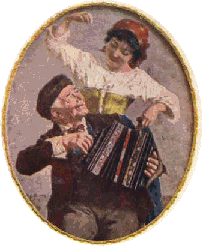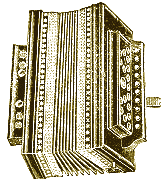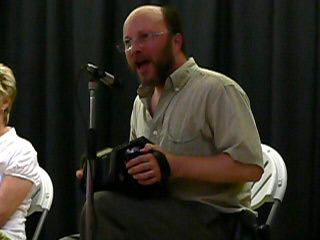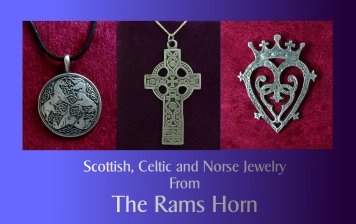Free Reeds
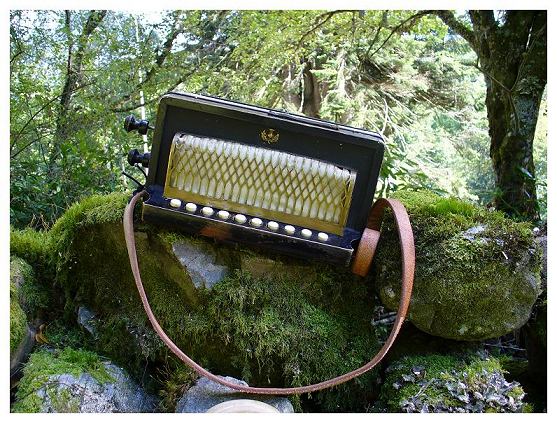
Melodeon
There is some geographic disagreement over the terms button accordion and melodeon. In England a bisonoric (different note on push and draw of the bellows) button accordion with one,two or three rows of buttons on the right hand (melody) side is likely to be called a melodeon. In Ireland a melodeon refers only to one-row instruments, while in the southern United States even these are called accordions.
The available notes on the melody side are based on different keys. For example, you could have a 1-row melodeon in the key of G. This would give you the notes G/A - B/C - D/E - F#/G spread over 4 buttons. The most common melodeons in existence now are the D/G box with 2 rows, used widely in English traditional music (particularly for the accompaniment of Morris dancing) and the B/C box used in Irish traditional music. Because the keys of the latter are a semitone apart, all the notes of the chromatic scale are in theory available (unlike the D/G box or others where the interval is a fourth.) There are many variations on these layouts, with 2½ row melodeons, accidentals and various options which players customise to suit their own style of music.
The two-row melodeon is apparently limited by being able to play only in its two given major keys - most commonly D and G, and their associated minor keys of A and E. However tunes in the major keys of E and A can also be managed, and in practice most British and Irish traditional music, and north American music with these roots, strays little from this limited set of keys. The vast majority of the traditional repertoire can be played using just fourteen notes available on all two-row melodeons.

A concertina, like the various accordions, is a member of the free-reed family of instruments. It was invented in 1829 (with a patent for an improved version filed in 1844) by Sir Charles Wheatstone. Concertinas typically have buttons on both ends and are distinguished from an accordion (piano or button) by the direction of their button travel when pushed. Concertina buttons travel in the same direction as the bellows whereas accordion buttons travel perpendicular to the direction of the bellows.
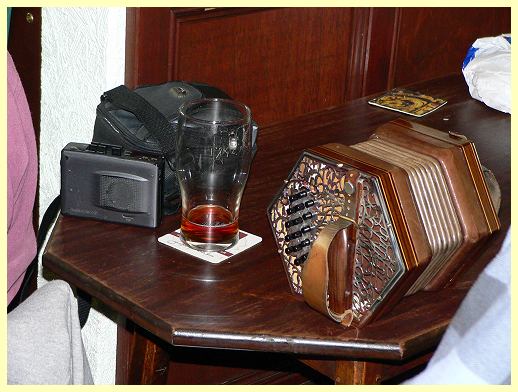

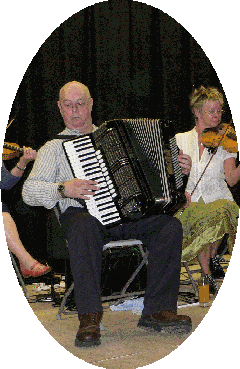
The Accordion
The piano accordian is a familiar instrument and is common in the folk tradition. It has the major benefit of being capable of covering any key. There are a number of sizes, the larger ones having more notes, particularly for the left hand giving a greater flexibility of sound. The worst part of the accordian is its weight - just ask a Morris man carrying one around. These instruments are mainly German or Italian and in various sizes, normally referred to in terms of the number of left-hand buttons , e.g. 80 bass.
The button accordion, common in France, is similar but instead of piano keys, the buttons are just that and as such they are often confused with the melodeon. However, the button accordion is a chromatic instrument just like the piano accordion but with the buttons laid out in rows the playing style is totally different and suits the French style of music. It can be used for the Morris but is much less common.
copyright 2007 , Jim & Beth Boyle, All Rights Reserved
No part of this website may be used for any purpose ( including using images )
without written consent from The Rams Horn
